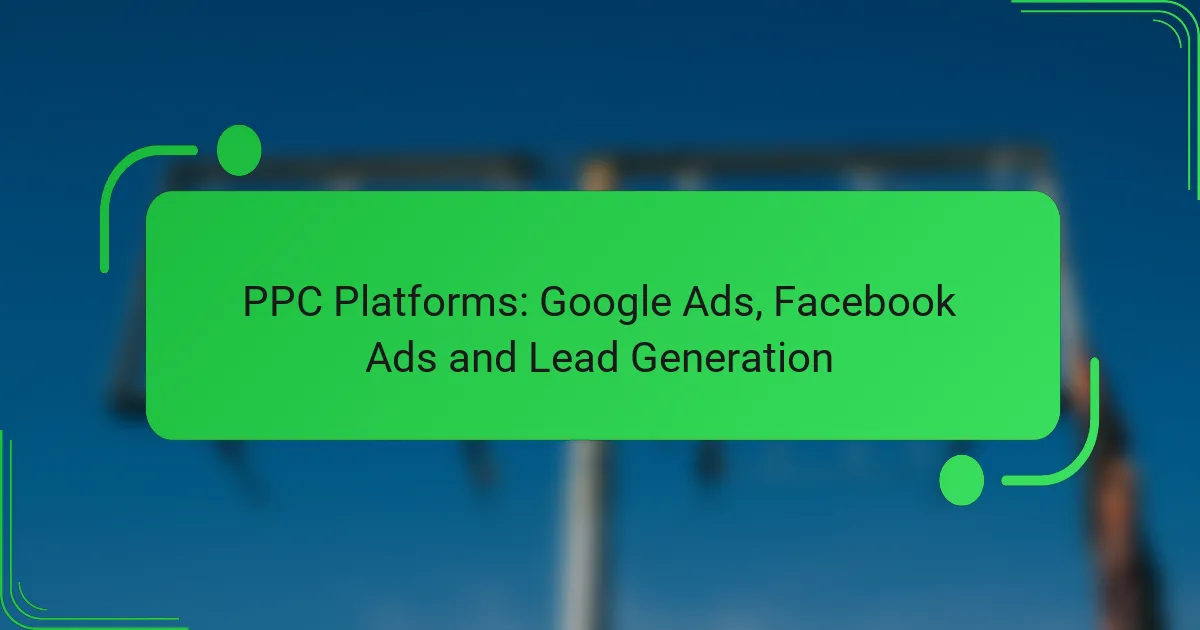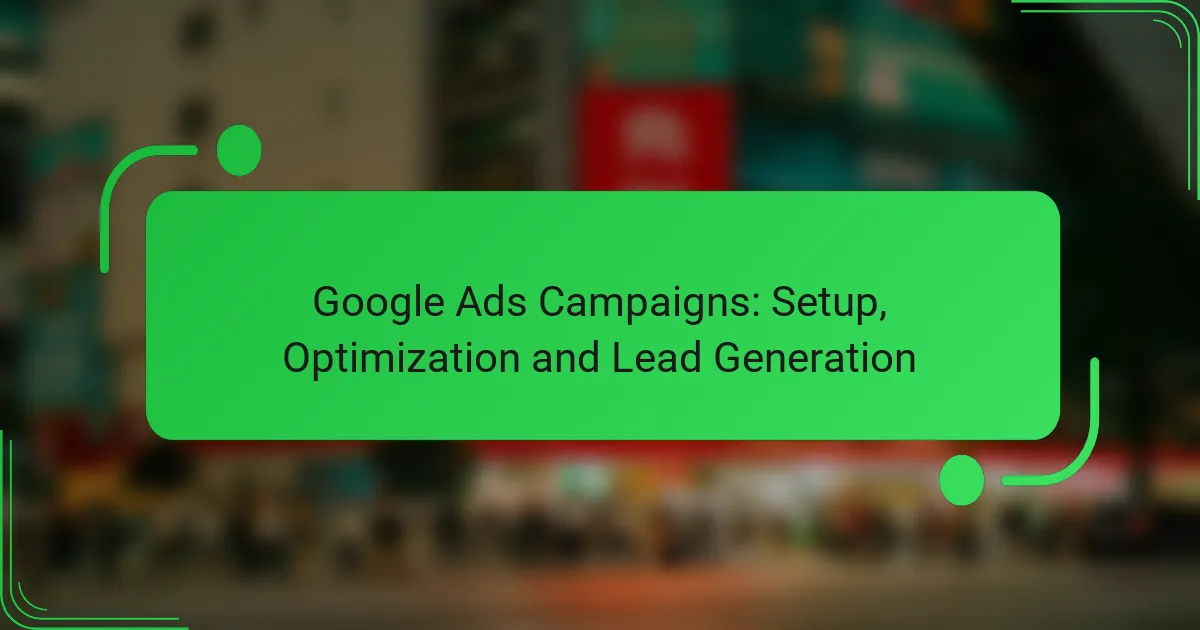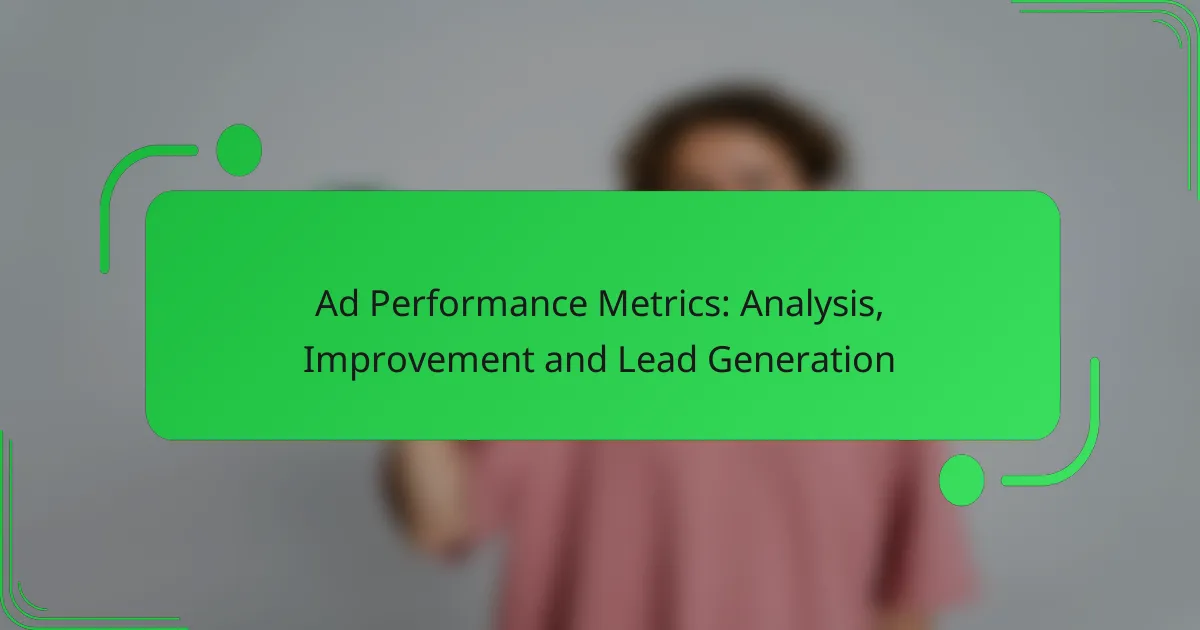PPC platforms like Google Ads and Facebook Ads are essential for effective lead generation, allowing businesses to target specific audiences with precision. By leveraging tailored messaging and advanced targeting options, these platforms enhance the chances of converting potential customers at different stages of their buying journey.
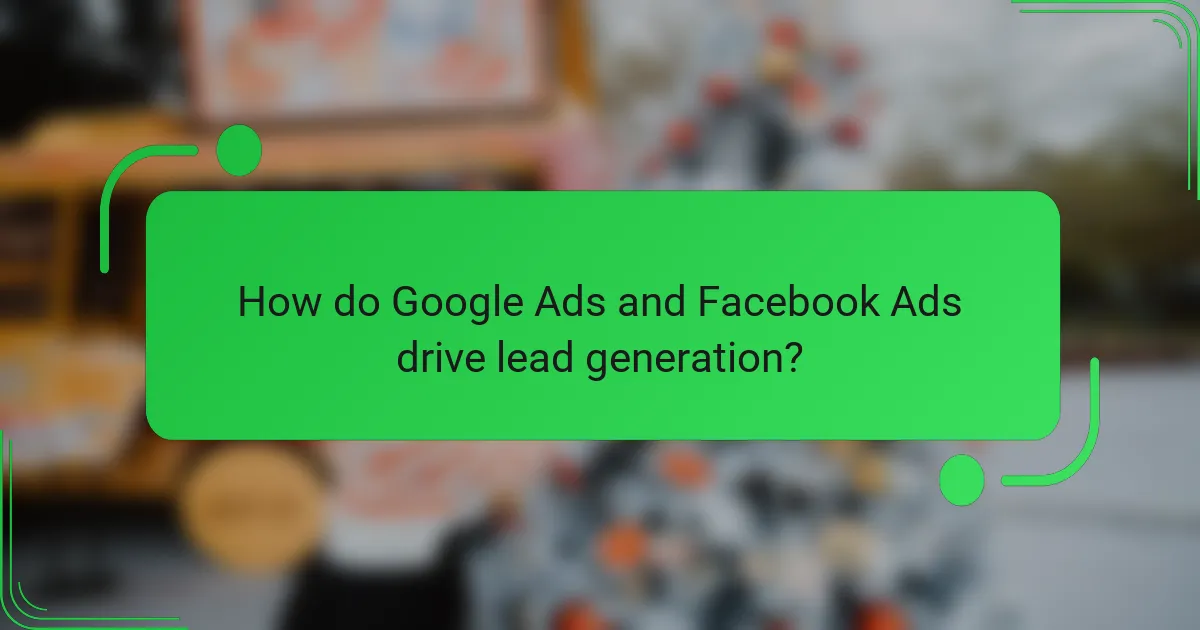
How do Google Ads and Facebook Ads drive lead generation?
Google Ads and Facebook Ads are powerful tools for driving lead generation by targeting specific audiences and capturing interest through tailored messaging. Both platforms enable businesses to reach potential customers at various stages of the buying journey, increasing the likelihood of conversions.
Google Ads targeting options
Google Ads offers a variety of targeting options that allow advertisers to reach users based on keywords, location, demographics, and interests. Advertisers can utilize search ads to capture intent-driven traffic or display ads to raise brand awareness among a broader audience.
Key targeting features include keyword match types, which help refine search queries, and location targeting that can be set to specific countries, regions, or even radii around a physical location. This flexibility allows businesses to tailor their campaigns effectively to their target market.
Facebook Ads audience segmentation
Facebook Ads excels in audience segmentation, enabling advertisers to create highly specific target groups based on user behavior, interests, and demographics. Advertisers can leverage data from user profiles, interactions, and even custom audiences derived from existing customer lists.
Utilizing tools like lookalike audiences can help businesses reach new users similar to their best customers, enhancing the potential for lead generation. Facebook’s detailed targeting options allow for precise ad placements that resonate with the intended audience.
Comparison of lead generation effectiveness
When comparing the effectiveness of Google Ads and Facebook Ads for lead generation, it’s essential to consider the intent of users on each platform. Google Ads typically captures users actively searching for specific products or services, often resulting in higher conversion rates.
In contrast, Facebook Ads can generate leads by creating interest and engagement among users who may not be actively searching but are open to discovering new solutions. Businesses should evaluate their goals and target audience to determine which platform aligns best with their lead generation strategy.

What are the key features of Google Ads?
Google Ads offers a range of features designed to help businesses effectively reach their target audience through paid search and display advertising. Key features include robust targeting options, diverse ad formats, and comprehensive performance tracking tools that enable advertisers to optimize their campaigns for better results.
Keyword targeting capabilities
Google Ads excels in keyword targeting, allowing advertisers to select specific keywords that trigger their ads when users search for related terms. This feature enables precise targeting, ensuring that ads reach users actively seeking relevant products or services. Advertisers can use broad match, phrase match, exact match, and negative keywords to refine their targeting strategy.
To maximize effectiveness, regularly review and update your keyword list based on performance data. Utilizing tools like Google’s Keyword Planner can help identify high-potential keywords and trends in your industry.
Ad formats available
Google Ads provides a variety of ad formats to cater to different marketing goals and audience preferences. These include text ads, responsive search ads, display ads, video ads, and shopping ads. Each format serves unique purposes, from driving traffic to e-commerce sites to increasing brand awareness through visual content.
When selecting an ad format, consider your campaign objectives and the platforms where your audience is most active. For example, video ads may be more effective for brand storytelling, while shopping ads are ideal for showcasing products directly in search results.
Performance tracking tools
Performance tracking is a crucial feature of Google Ads, providing insights into how well your campaigns are performing. Advertisers can access metrics such as click-through rates (CTR), conversion rates, and return on ad spend (ROAS) to evaluate effectiveness. Google Analytics can be integrated for deeper insights into user behavior on your website.
To optimize campaigns, regularly analyze performance data and adjust your strategies accordingly. Setting up conversion tracking is essential to measure the success of your ads in achieving specific business goals, such as sales or lead generation.
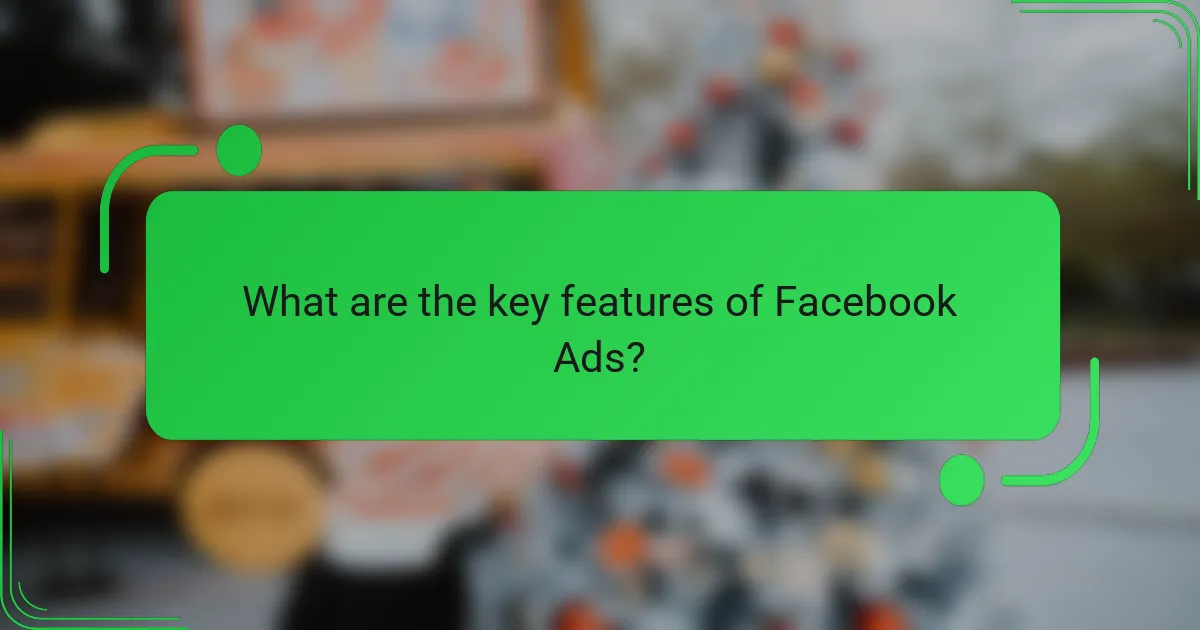
What are the key features of Facebook Ads?
Facebook Ads offers a range of features that enable businesses to target specific audiences effectively and measure their advertising performance. Key aspects include custom audience creation, various ad placement options, and detailed engagement metrics that help optimize campaigns.
Custom audience creation
Custom audience creation allows advertisers to target specific groups based on their existing customer data, website visitors, or engagement with previous ads. This feature enhances the relevance of ads by reaching users who are more likely to convert.
To create a custom audience, businesses can upload customer lists, use website traffic data, or leverage engagement metrics from their Facebook page. This targeted approach can significantly improve ad performance and return on investment.
Ad placement options
Facebook Ads provides diverse ad placement options across its platforms, including Facebook, Instagram, Messenger, and the Audience Network. Advertisers can choose automatic placements for broader reach or manual placements to focus on specific platforms.
Choosing the right placements can affect visibility and engagement. For instance, ads on Instagram may perform better for visually appealing products, while Facebook feeds might be more effective for informational content. Testing different placements can help identify the most effective strategy.
Engagement metrics
Engagement metrics are crucial for assessing the effectiveness of Facebook Ads. Key metrics include click-through rates, likes, shares, and comments, which provide insights into how users interact with ads.
Monitoring these metrics allows advertisers to adjust their campaigns in real-time. For example, if an ad has a low click-through rate, it may need a more compelling call-to-action or a different visual approach. Regularly reviewing engagement metrics can lead to improved ad performance and better overall results.
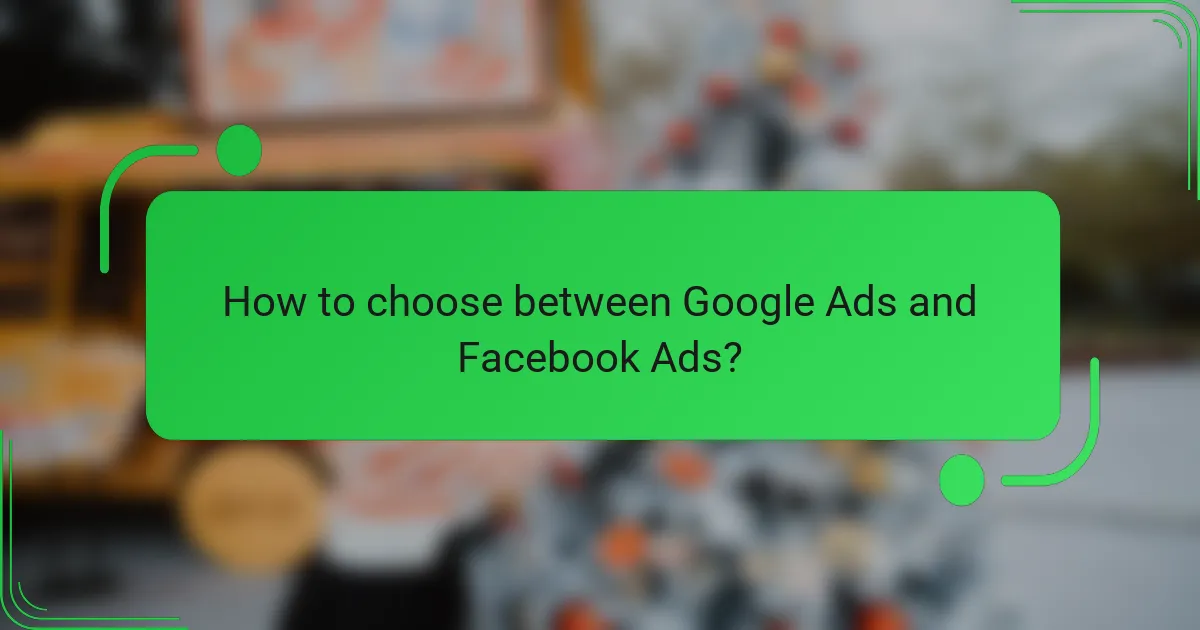
How to choose between Google Ads and Facebook Ads?
Choosing between Google Ads and Facebook Ads depends on your target audience, budget, and campaign objectives. Each platform has unique strengths that can align with different marketing goals.
Target audience characteristics
Understanding your target audience is crucial when deciding between Google Ads and Facebook Ads. Google Ads is effective for capturing intent-driven users actively searching for products or services, while Facebook Ads excels at targeting users based on interests and demographics.
For example, if your audience is primarily looking for specific solutions, Google Ads may yield better results. Conversely, if you aim to create brand awareness among a broader audience, Facebook Ads could be more beneficial.
Budget considerations
Budget plays a significant role in your choice of advertising platform. Google Ads typically operates on a pay-per-click (PPC) model, where costs can vary widely based on competition and keywords, often ranging from a few cents to several dollars per click.
Facebook Ads, on the other hand, allows for more flexible budgeting options, including cost-per-impression (CPM) and cost-per-click (CPC) models. This can make it easier to manage spending, especially for small to medium-sized businesses.
Campaign objectives alignment
Your campaign objectives should guide your choice between Google Ads and Facebook Ads. If your goal is to drive immediate sales or leads, Google Ads may be more effective due to its focus on search intent.
If your objective is to build brand awareness or engage users over time, Facebook Ads can provide better opportunities through visually appealing content and targeted audience engagement. Consider aligning your objectives with the strengths of each platform for optimal results.
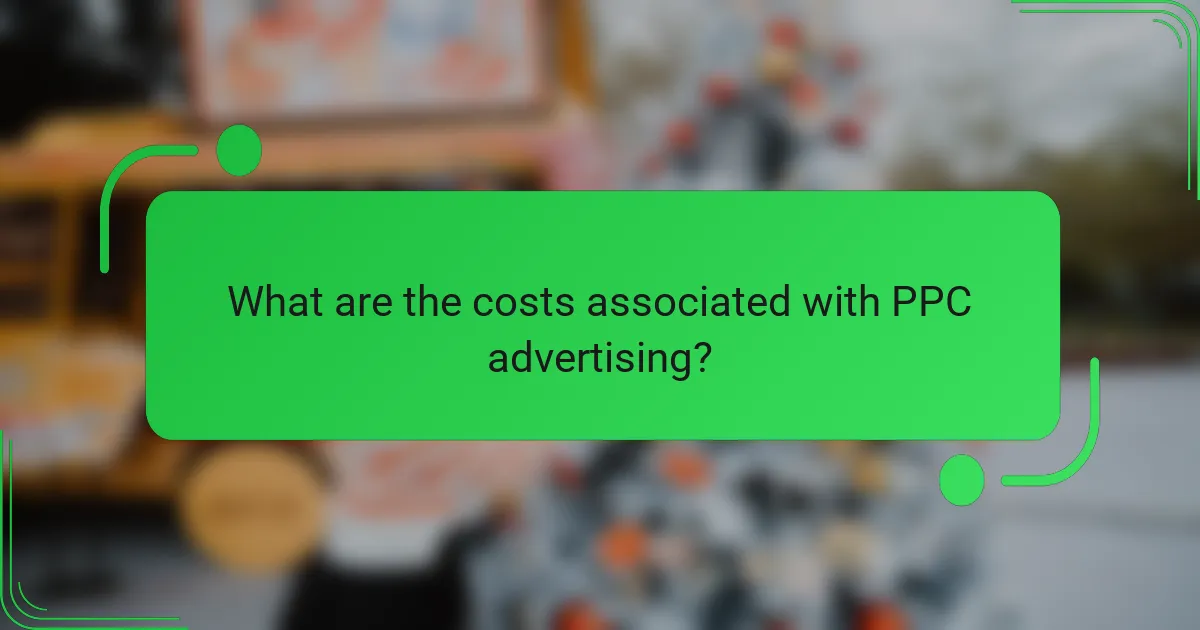
What are the costs associated with PPC advertising?
The costs of PPC advertising can vary significantly based on the platform, competition, and targeting options. Advertisers typically pay either per click or per impression, depending on the chosen strategy, which can affect overall budget and return on investment.
Google Ads cost-per-click (CPC) rates
Google Ads operates primarily on a cost-per-click (CPC) model, where advertisers pay each time a user clicks on their ad. CPC rates can range from a few cents to several dollars, influenced by factors such as keyword competitiveness, ad quality, and industry. For instance, highly competitive sectors like finance may see CPCs in the higher range, while niche markets might enjoy lower costs.
To optimize your CPC, focus on improving your Quality Score, which considers the relevance of your ad and landing page. Regularly reviewing and adjusting your keyword strategy can help you manage costs effectively and maximize your ad spend.
Facebook Ads cost-per-impression (CPM) rates
Facebook Ads typically use a cost-per-impression (CPM) model, where advertisers pay for every thousand impressions their ad receives. CPM rates can vary widely, often falling between $5 to $15, depending on audience targeting, ad placement, and overall competition. Advertisers should consider their campaign goals when choosing between CPM and CPC strategies.
To manage CPM effectively, utilize Facebook’s targeting options to reach the most relevant audience. A/B testing different ad creatives and placements can also help identify the most cost-effective strategies for your campaigns.
